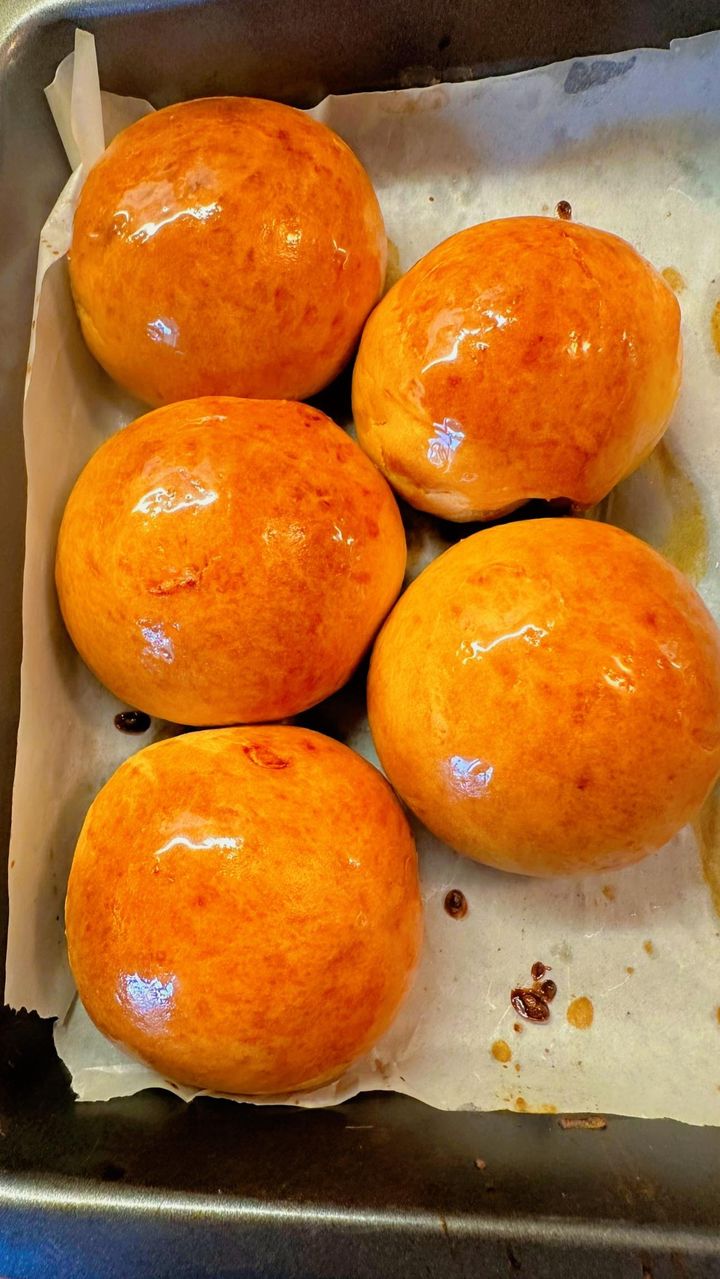Step 1: Prepare the Dough
- Combine Dry Ingredients
In a large mixing bowl, whisk together the flour, salt, sugar (if using), and instant yeast until well combined. If you’re using active dry yeast, ensure you activate it first by dissolving it in warm water for about 5 minutes before adding it to the dry ingredients. - Add Wet Ingredients
Make a well in the center of the dry ingredients and pour in the warm water and olive oil. Mix with a wooden spoon or spatula until a shaggy dough forms. It may look sticky, which is perfectly normal.
Step 2: Knead the Dough
- Flour Your Surface
Lightly flour a clean surface and transfer the dough onto it. Dust your hands with flour to prevent sticking. - Knead the Dough
Knead the dough for about 8-10 minutes, folding and pushing the dough until it becomes smooth and elastic. If the dough is too sticky, sprinkle in a little more flour as needed, but be careful not to add too much, as this can make the bread dense.
Step 3: First Rise
- Shape the Dough
Form the dough into a ball and place it in a lightly greased bowl, turning it to coat the surface with oil. This prevents the dough from drying out. - Cover and Rise
Cover the bowl with a clean kitchen towel or plastic wrap. Place it in a warm, draft-free area (like an oven that’s turned off) to rise for about 1-2 hours, or until the dough has doubled in size.
Step 4: Shape the Loaf
- Punch Down the Dough
After the dough has risen, gently punch it down to release the air. Transfer it back to the floured surface. - Shape the Dough
Shape the dough into a loaf by flattening it into a rectangle and then rolling it tightly, pinching the seams to seal. Alternatively, you can shape it into a round loaf. - Prepare the Baking Sheet or Loaf Pan
If using a baking sheet, line it with parchment paper or lightly grease it. If using a loaf pan, grease the pan to prevent sticking.
Step 5: Second Rise
- Place the Dough
Transfer the shaped dough to the prepared baking sheet or loaf pan. - Cover and Rise Again
Cover the dough with the kitchen towel and let it rise for another 30-60 minutes, or until it has puffed up nicely.
Step 6: Preheat and Bake
- Preheat the Oven
About 20 minutes before baking, preheat your oven to 375°F (190°C). - Score the Dough
Using a sharp knife or a bread lame, make a few shallow slashes on the top of the dough. This allows steam to escape and helps the bread rise evenly. - Bake the Bread
Place the dough in the preheated oven and bake for 25-30 minutes, or until the crust is golden brown and the bread sounds hollow when tapped on the bottom. If you have a kitchen thermometer, the internal temperature should reach about 190°F (88°C).
Step 7: Cool and Enjoy!
- Cool the Bread
Once baked, remove the bread from the oven and transfer it to a wire rack to cool completely. Allowing it to cool prevents the bread from becoming soggy. - Slice and Serve
Once the bread has cooled, slice it with a serrated knife. Serve warm with butter, make sandwiches, or enjoy it toasted with your favorite toppings.
Tips for the Perfect Homemade Bread
- Experiment with Flavors: You can add herbs, cheese, or spices to the dough for added flavor. Garlic powder, Italian herbs, or shredded cheese work wonderfully!
- Storage: Store the bread in an airtight container at room temperature for up to 3 days. For longer storage, wrap it in plastic wrap and freeze it for up to 3 months.
- Freshness: For the best flavor and texture, consume the bread within a few days of baking.
Conclusion
Homemade bread is a delightful experience that brings satisfaction with every bite. This easy recipe allows you to create a beautiful, delicious loaf that can be enjoyed in countless ways. Whether you’re slathering it with butter, using it for sandwiches, or serving it alongside a hearty soup, your homemade bread is sure to impress family and friends alike. Happy baking!
